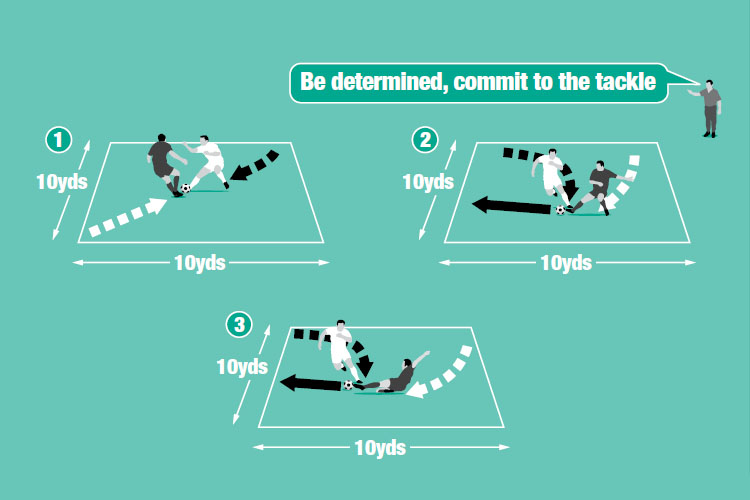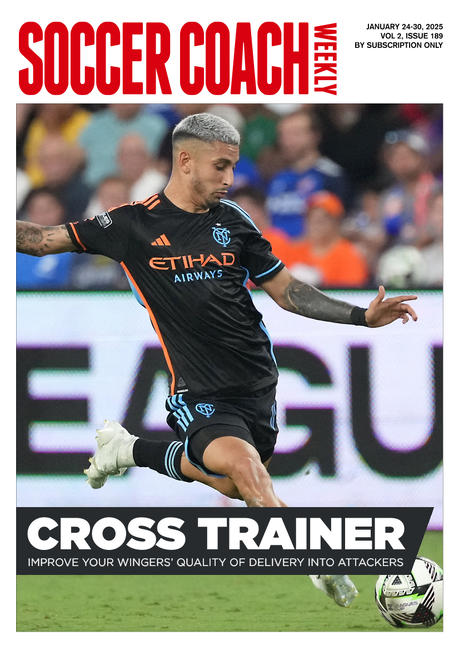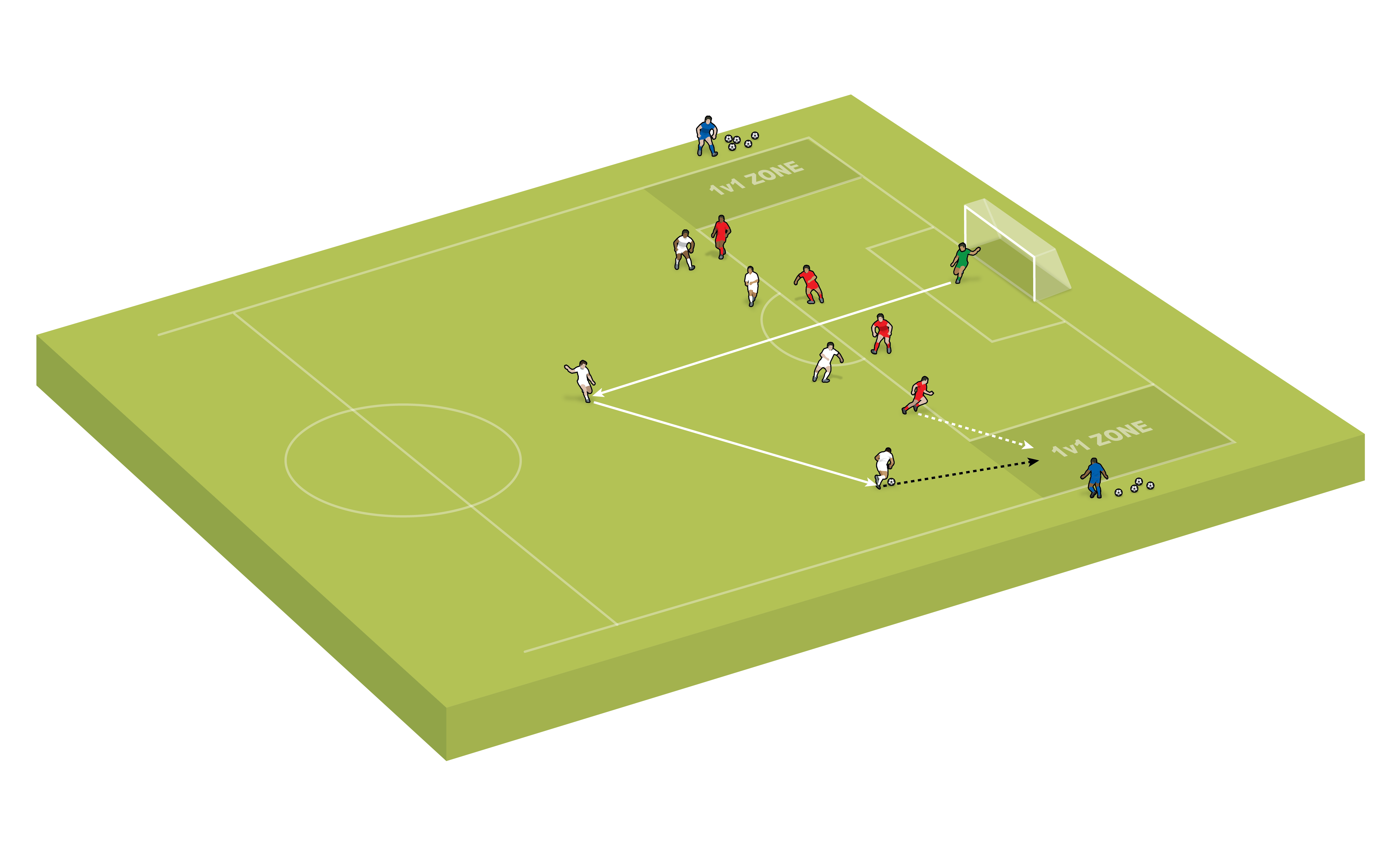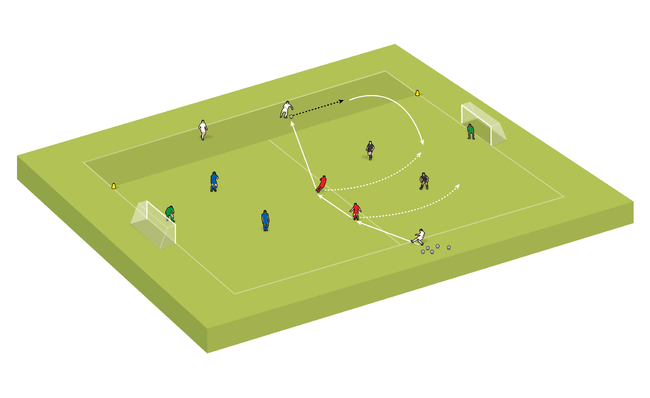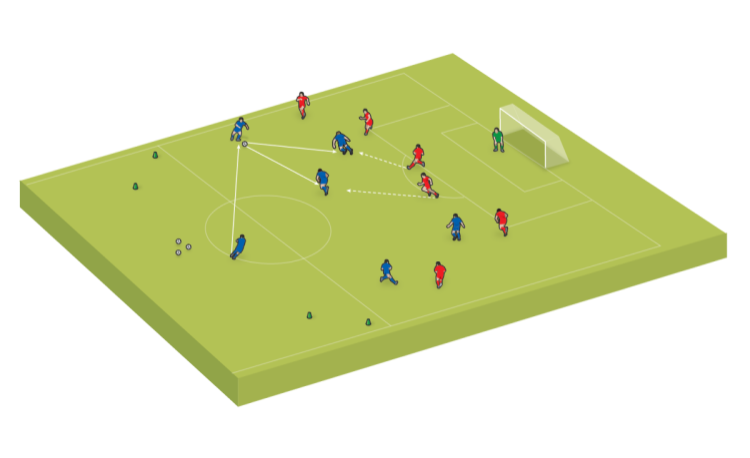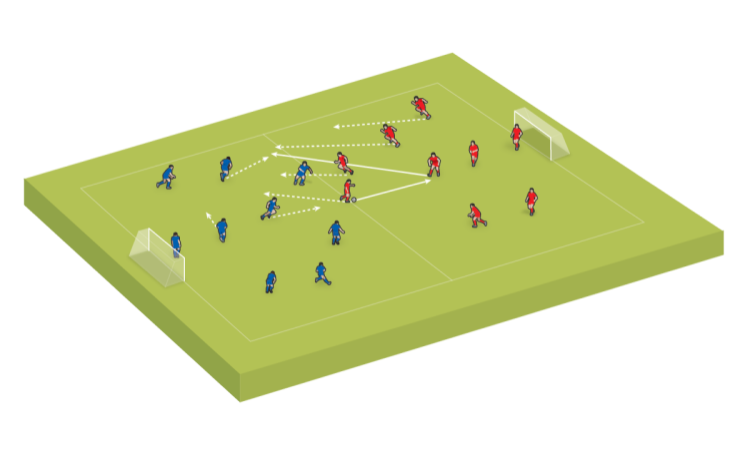Three tackles
A successful tackle will give your team a chance to reorganise or even regain possession of the ball. Practice three variations – the block, slide and poke – with this drill.
What this session is about
- Tackling
- Defending
What to think about
For the block tackle: Plant the non-tackling foot firmly; make contact with the middle of the ball, like a side-foot pass; ensure body weight is behind the tackling foot and keep the knee and ankle locked; keep the head down over the ball; put a foot under the ball if it becomes stuck to lift it away. For the slide tackle: Approach from the side; wait until the attacker separates from the ball; use the leg farthest from the ball and tuck the other leg underneath the backside; slide on the outer thigh/ hip; tackle with the laces and contact the centre to top half of the ball; “hook” the ball in opposite direction to retain it or knock it out of play. For the poke tackle: Approach from the side or behind; get close; use the foot nearest the ball; stab the ball away using the toes to kick near its centre.
Set-up
| Warm up | Session | Development | Game Situation | Warm Down |
|---|---|---|---|---|
| 10 minutes | 15 minutes | 10 minutes | 15 minutes | 10 minutes |
What you get your players to do
Block tackle Place a ball in the middle of a 10-yard square for a 1v1. The drill starts with the players standing opposite each other, about three yards either side of the ball. On your signal, players try to win the ball with a block tackle and dribble across the line at the opposite end. Make sure players practise using both feet.
Poke tackle Now both players start at one end, with the attacker close to one touchline and the defender next to the other touchline. At half pace to begin with, the attacker dribbles the ball towards the opposite side, allowing the defender to practise executing the poke tackle. After several attempts, players switch roles. Make sure players practise using both feet.
Slide tackle Players start at opposite ends. The attacker dribbles forward steadily at half speed so he can be caught, before the second player, the defender, begins his run and slide tackle. After several attempts, players switch roles. Make sure players practise using both feet.
Development
Play 2v2 in a 20x15 yards playing area, with a fiveyard zone at each end. Each team attacks an end zone and scores a point by dribbling the ball into that end zone.
However, teams score bonus points for completing a successful tackle that either wins possession or knocks the ball out of play. Teams restart play with a pass-in.
Related Files
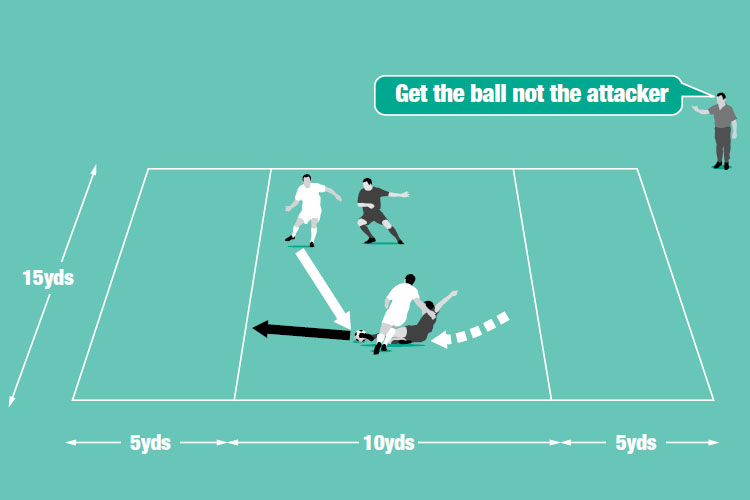
Game situation
Play 4v4 in a 40x25 yards playing area. Set up four mini goals, one on each side of the pitch. One team will attack the goals across the width of the pitch while the other team will try to score in the other goals.
Place the ball in the centre of the pitch, with one player from each team at either end.
On your signal, they run to begin a 1v1. Once a team has scored or the ball goes out of play, add one player to each team and restart play with a pass-in, until each team has four players. Play for a set time – the team with the most goals wins – then begin again with a 1v1 but teams try to score in the other goals.
Newsletter Sign Up
Coaches Testimonials

Gerald Kearney, Downtown Las Vegas Soccer Club

Paul Butler, Florida, USA

Rick Shields, Springboro, USA

Tony Green, Pierrefonds Titans, Quebec, Canada
Subscribe Today
Discover the simple way to become a more effective, more successful soccer coach
In a recent survey 89% of subscribers said Soccer Coach Weekly makes them more confident, 91% said Soccer Coach Weekly makes them a more effective coach and 93% said Soccer Coach Weekly makes them more inspired.
*includes 3 coaching manuals
Get Weekly Inspiration
All the latest techniques and approaches
Soccer Coach Weekly offers proven and easy to use soccer drills, coaching sessions, practice plans, small-sided games, warm-ups, training tips and advice.
We've been at the cutting edge of soccer coaching since we launched in 2007, creating resources for the grassroots youth coach, following best practice from around the world and insights from the professional game.
